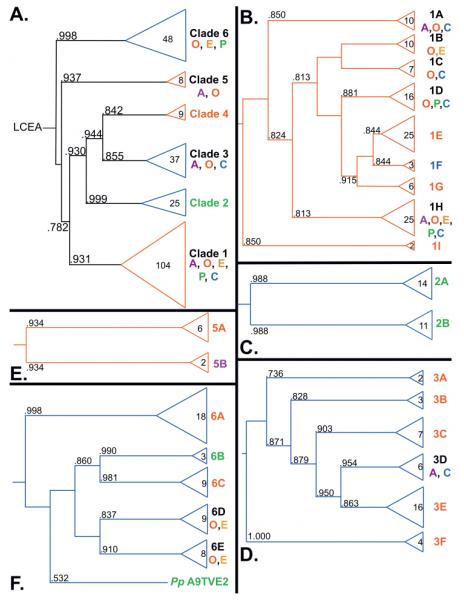An Ohio State University molecular biologist leveraged a supercomputer to help better define the family tree of a group of enzymes that have been implicated in a wide range of human diseases and are important targets for anti-cancer therapies.
Along with several OSU colleagues, Rebecca S. Lamb, Ph.D., an assistant professor of Molecular Genetics, recently analyzed the evolutionary history of the poly(ADP-ribose)polymerase (PARP) superfamily.
 |
| Rebecca S. Lamb, Ph.D. |
These proteins are found in eukaryotes, a wide range of organisms – animals, plants, molds, fungi, algae and protozoa –whose cells contain complex structures enclosed within membranes. While PARP proteins can be found with any of these “supergroups,” they have been most extensively studied in mammals.
“In these organisms, PARPs have key functions in DNA repair, genome integrity and epigenetic regulation,” said Lamb. “More recently it has been found that proteins within the PARP superfamily have a broader range of functions that initially predicted.”
The researchers used computers to identify 236 PARP proteins from 77 species across five of the six supergroups. Lamb then accessed the Glen Cluster at the Ohio Supercomputer Center (OSC) to perform extensive phylogenetic analyses of the identified PARP regions.
“This is computationally intensive work that would have been impossible without the computer resources provided at OSC,” Lamb said. “In particular, the ability to try a variety of tools that require a great deal of CPU and memory capabilities was essential for success.”
Amongst other tools, she employed the PhyML3.0 software package, which fit a statistical model to the aligned sequence data and provided estimates for the model’s parameters.
“Dr. Lamb’s project is an excellent example of a scientist running a very domain-specific software package on our state-of-the-art systems,” said Ashok Krishnamurthy, Ph.D., interim co-executive director of OSC. “While the center maintains a large collection of licensed and open-source software, there are occasions where very specialized or customized applications are required. Our staff mdembers are very good at working with researchers to modify these codes to get them installed, running and delivering results.”
Access to powerful OSC systems allowed the researchers to experiment with a wide variety of options and parameters, in order to achieve the best results, Lamb noted.
“PARPs are found in all eukaryotic supergroups for which sequence is available, but some individual lineages within supergroups have independently lost these genes,” said Lamb. “The PARP superfamily can be subdivided into six branches or ‘clades.’ Two of these clades were likely found in the last common eukaryotic ancestor. In addition, we have identified PARPs in organisms in which they have not previously been described.”
 |
| OSU's Rebecca S. Lamb, Ph.D., co-authored a recent paper that used phylogenetic analyses of a superfamily of enzymes implicated in a wide range of human diseases and important targets for anti-cancer therapies. |
Three main conclusions were drawn from the study. First, the broad distribution and pattern of representation of PARP genes indicated to the researchers that the ancestor of all existing eukaryotes encoded proteins of this type. Second, the ancestral PARP proteins had different functions and activities. One of these proteins likely functioned in DNA damage response. Third, the diversity of the PARP superfamily is larger than previously documented, suggesting as more eukaryotic genomes become available, this gene family will grow in both number and type.
The study, “Evolutionary history of the poly(ADP-ribose) polymerase gene family in eukaryotes,” was authored by Lamb and OSU colleagues Matteo Citarelli and Sachin Teotia and appeared in a recent issue of the journal BMC Evolutionary Biology. The work was supported by a grant from the Ohio Plant Biotechnology Consortium and by funds from the Ohio State University.
The Ohio Supercomputer Center (OSC) is a catalytic partner of Ohio universities and industries that provides reliable advanced computational infrastructure and services for academic and industry research. OSC provides advanced computation, research and educational resources to a diverse statewide community, including higher education, K-12, and industry. More information is available at www.osc.edu.